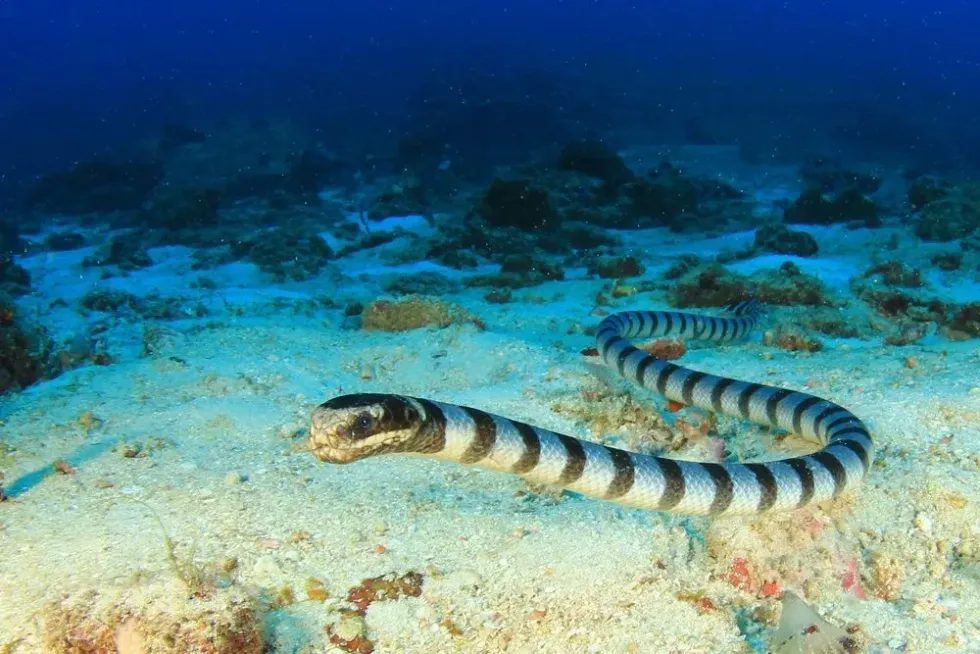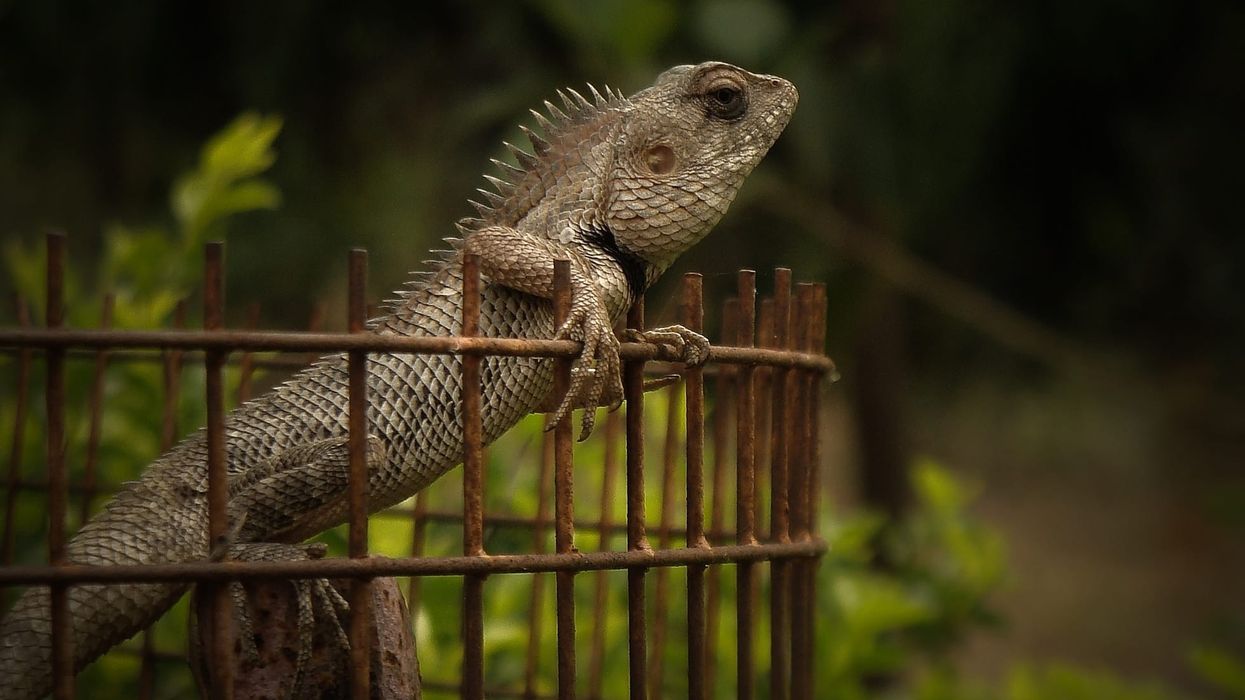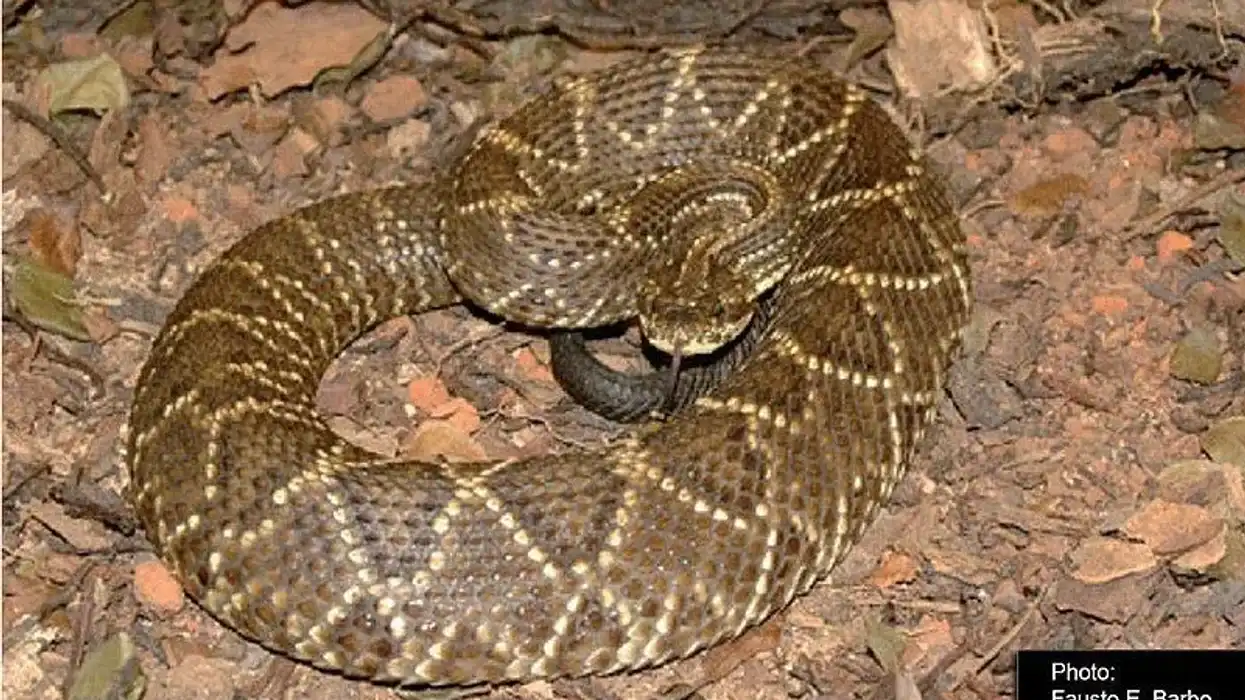The turtle-headed sea snake (Emydocephalus annulatus) is a snake that is mostly found in shallow waters close to Australia, the Great Barrier Reef and South China Sea. While you may only get the chance to see these snakes when they come out in the open to breathe, they usually dwell at the bottom of the water bodies.
This fish-egg eating sea snake species, interestingly, is from the same family as cobras (elapidae), and a lot of research is on the way regarding them since they are such a newly discovered species.
For more relatable content, check out these anaconda snake facts and scarlet snake facts for kids.
Turtle-Headed Sea Snake Interesting Facts
What type of animal is a turtle-headed sea snake?
The turtle-headed sea snakee (Emydocephalus annulatus), well, is a snake!
What class of animal does a turtle-headed sea snake belong to?
Like other snakes, the turtle-headed sea snake (Emydocephalus annulatus) belongs to the class of reptilia or reptiles.
How many turtle-headed sea snakes are there in the world?
Unfortunately, there is no data or research that can tell us the exact number of turtle-headed sea snakes that there are in the world, however, it may be concluded from the conservation status of this species of sea snakes that their population is fairly stable, and that they'll be around for a long time to come!
Where does a turtle-headed sea snake live?
Turtle-headed sea snakes prefer to live at the bottom of shallow waters. The depth at which they can be found is around 131.2 ft (40 m), although they occur more frequently close to depths of about 32.8 ft (10 m).
These sea snakes use the coral reefs as hiding sites, since they are more of a meek species of snake and would rather hide than attack.
What is a turtle-headed sea snake's habitat?
The turtle-headed sea snake habitat is scattered and their populations can be found irregularly at different parts of the world. Although, they can be spotted in way large numbers close to Australia, South China Sea and the Great Barrier Reef. They are also found in the coral reefs that surround Philippines, the South China Sea and the Pacific Islands.
Who do turtle-headed sea snakes live with?
The turtle-headed sea snake (Emydocephalus annulatus) species is particularly colonial. They occur in large groups, which also includes the gestating turtle-headed sea snake female. They also live freely with other related sea snake species without any recorded signs of aggression.
How long does a turtle-headed sea snake live?
While the average lifespan of the turtle-headed sea snake species is not known, we do know that the average lifespan of a sea snake is of around seven years, when kept in captivity.
The lifespan in their natural habitat may be affected by a lot of factors that include the algae formation that can be found on the scales of these sea snakes.
Too much of algae formation may make these snake inactive.
How do they reproduce?
The turtle-headed sea snake is a viviparous species, which means that these animals give birth to off-springs much like in the case of humans. What is interesting about this species is the way the turtle-headed sea snake male can search for females to mate with through pheromones.
The male individuals look for females for mating on the basis of the movements and body-color of the other sex.
While mating, the snakes come to the surface of the water in order to facilitate breathing. The female snakes remain in large groups when they are gestating. Not much else is known about their mating habits, and whether or not both the parent snakes take care of the new born turtle-headed sea snakes together.
What is their conservation status?
According to the IUCN Red List, the conservation status of the turtle-headed sea snake is that of Least Concern. This means that the population of this snake species if fairly stable and their habitat is not facing the threat of degradation in the near future.
If you wish to explore the various marine creatures that can be found in the coral reefs around Australia, make sure to search for these wondrous snakes as well.
Turtle-Headed Sea Snake Fun Facts
What do turtle-headed sea snakes look like?
The turtle-headed sea snake may be found in several colors, but the body is mainly black in color, with bands of yellow or white color. These medium-length, non venomous snakes from Australia do not have palatal teeth, instead, they have scale-like teeth that help them in scraping eggs from the surface of coral reef.
A description of the appearance of a turtle-headed sea snake would essentially have to mention the blunt head of this species, which resembles that of a turtle, although the two animals are hardly related!
 *We've been unable to source an image of a turtle-headed sea snake and have used an image of a banded sea snake instead. If you are able to provide us with a royalty-free image of a turtle-headed sea snake, we would be happy to credit you. Please contact us at hello@kidadl.com
*We've been unable to source an image of a turtle-headed sea snake and have used an image of a banded sea snake instead. If you are able to provide us with a royalty-free image of a turtle-headed sea snake, we would be happy to credit you. Please contact us at hello@kidadl.com
How cute are they?
It is almost impossible to deny the fact that this fish egg-eating sea snake is very cute!
The blunt, turtle-like head and the variable scale color is sure to give you something to be amused over - whether you are reading about them from the perspective of the science and the species' survival, or simply to be aware of more and more fascinating creatures of the world.
How do they communicate?
While the exact mode of communication used by this species from Australia is not known, it can be concluded by their aptitude for understanding pheromones and movements that these factors are important for the turtle-headed sea snake.
The family elapidae, and even the snake family as a whole is known to communicate by the system of leaving a trail of pheromones that can be decoded by another animal of the family.
How big is a turtle-headed sea snake?
The average length of a turtle-headed sea snake can be around 30-36 in (75-90 cm). For a comparative understanding, a western diamond-back rattlesnake can be twice the size of this species, while a hognose snake is only about half the size!
How fast can a turtle-headed sea snake move?
There is no research or data that can tell us the exact speed of this species, but there is no reason to assume that they can't slither away at lightening speed!
How much does a turtle-headed sea snake weigh?
Unfortunately, there is not much data available regarding the weight of this snake species from Australia, however, the slender frame promises a light weight.
What are the male and female names of the species?
There are no distinct names for the male and female turtle-headed sea snake, and so, we will have to resort to referring to them as the male turtle-headed sea snake and the female turtle-headed sea snake.
What would you call a baby turtle-headed sea snake?
The baby turtle-headed snake would be called a snakelet!
What do they eat?
The diet of turtle-headed sea snakes (Emydocephalus annulatus) consists mainly of fish eggs that they find easily in their natural habitat. They feed on the fish eggs that are usually attached to the reefs at the bottom of the sea or ocean.
Such selective fish-eggs based diet is unusual for snakes, since they are known to feed on a wide array of creatures.
Are they poisonous?
The turtle-headed sea snake venom is weak and is not known to be dangerous for humans or any other animals in general. However, it would be best to maintain safe distance and not get bitten by these adorable fish-egg eating sea snake species.
Would they make a good pet?
It is unlikely that a turtle-headed sea snake would prove to be a good pet, since their natural habitat would be very difficult to mimic in domestic aquariums.
It would also be difficult to completely accept the fact that the venom of these snakes is not harmful, and let's be honest, you would not want to perpetually be scared of your own pet.
Did you know...
The turtle-headed sea snake (Emydocephalus annulatus) is a fish egg-eating sea snake, and does not prey on any other fish species.
These snakes are found in shallow waters around Australia, where there is a coral reef formation.
The fish eggs that this snake species prefers includes those of gobies and blennies.
The turtle-headed sea snake belong to the same family as cobras!
Since they have weak venom, we have no reason to term the turtle-headed sea snake poisonous.
How do turtle-headed sea snakes defend themselves?
Turtle-headed sea snakes are not known to be aggressive. On the contrary, they are meek; and when met with any danger, they choose to hide in the crevices of coral reef. Occasionally, they would definitely bite the attacker in order to save themselves.
Can turtle-headed sea snakes breathe out of water?
The turtle-headed, fish egg-eating sea snake from Australia can spend two hours between each breath. While it does need to come out in the open in order to get a breath, it also has skin that is capable of exchanging gases!
Here at Kidadl, we have carefully created lots of interesting family-friendly animal facts for everyone to discover! For more relatable content, check out these common garter snake facts and eastern milk snake facts pages.
You can even occupy yourself at home by coloring in one of our free printable snake coloring pages.
*We've been unable to source an image of a turtle-headed sea snake and have used an image of a banded sea snake instead as the main image. If you are able to provide us with a royalty-free image of a turtle-headed sea snake, we would be happy to credit you. Please contact us at hello@kidadl.com




 *We've been unable to source an image of a turtle-headed sea snake and have used an image of a banded sea snake instead. If you are able to provide us with a royalty-free image of a turtle-headed sea snake, we would be happy to credit you. Please contact us at hello@kidadl.com
*We've been unable to source an image of a turtle-headed sea snake and have used an image of a banded sea snake instead. If you are able to provide us with a royalty-free image of a turtle-headed sea snake, we would be happy to credit you. Please contact us at hello@kidadl.com



